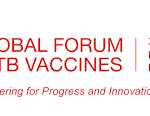It costs approximately $100million to perform tuberculosis (TB) vaccine efficacy studies in humans. This substantial cost is due to the nature of Mycobacterium tuberculosis (M.tb) infection, where natural M.tb exposure does not always lead to M.tb infection. Additionally, approximately 3% of healthy individuals who do get M.tb infected actually develop TB. Due to this a large number of participants are required for TB vaccine efficacy studies to be sufficiently powered.
Eric Rubin from the Harvard T.H. Chan School of Public Health, is in the process of developing M.tb strains for human M.tb challenge models for TB vaccine studies. A similar challenge model is used for Malaria vaccine studies, where potential malaria vaccines are tested in healthy donors challenged with drug susceptible malaria strains. This challenge model has been a useful tool for accelerating malaria vaccine research.
One of the main challenges of developing a M.tb challenge model is safety. The M.tb challenge strain should be viable i.e should replicate, but it should not cause sustained infection, disease, reactivation, lung damage or be transmittable. This creates a “Goldilocks Problem”, available M.tb auxotrophs are too safe and virulent M.tb is too dangerous. Therefore, we need a strain that is in between, one that can replicate in vivo and is safe enough to cause infection but not disease. He presented data on some of the methods his research group used to develop M.tb strains that can be used in M.tb challenge models. His research group created a strain that has a kill-switch under the control of the tetracyclin (tetR) regulon, where addition of doxycycline (tetracycline analogue) induces protein expression of lysin in M.tb which kills the bacteria. Additionally, they created M.tb strains that rely on non-canonical amino acids or antibiotics for protein expression and bacterial growth.
Another challenge of this model, is how do we quantify bacterial load in vivo during the challenge. To combat this, they are developing M.tb reporter strains that use food additives such as methyl salicate (mint scent). In theory M.tb that expresses methyl salicate can be detected using a breathalyzer. Indeed they demonstrated that they were able to detect methyl salicate from M.tb cultures using this M.tb reporter strain.
The main question, is will these strains be safe. Unfortunately, this data is not available as the experiments in non-human primates are scheduled to start in mid-2019. However, data presented by Eric Rubin provides hope for an M.tb challenge model in the near future.
“What we are doing is crazy, and it’s still a work in progress!”, Eric Rubin.
Talk: TBC
Article by Cheleka AM Mpande

